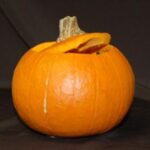Strawberry jam, strawberry shortcake, strawberry ice cream, and strawberry/rhubarb pie – the list of strawberry favorites contains many classic American desserts. This sweet and juicy red berry is also great eating when picked fresh and sliced over cereal or served dipped in chocolate with a glass of champagne!
Strawberries are perennials that are easy to grow, produce berries the first summer you plant them, and reproduce rapidly so that you can keep expanding your beds of berries.
To start your strawberry bed, you can purchase plants in early spring at most local nurseries or they can be ordered on line or through catalogues. They are not expensive – you can find deals that offer 20 plants for $10.
There are lots of varieties to choose from – some bear fruit in June while others are ‘ever-bearing’ and produce fruit all summer. I have three varieties in my garden with a total of 30 berry plants – these were started from three plants I found growing on my property plus plants I purchased at my local Agway. The ‘found’ plants are an unknown variety and the purchased varieties are Tribute (ever-bearing) and Delmarvel (June bearing).
Once you purchase strawberries, you will have plants for as long as you care to tend them. Strawberry plants produce ‘runners’ – new plants that grow off the main plant on a long thin stem, sprout roots, and grow a new baby plant. Runners give you a continual supply of new plants to start new beds or beef up your existing beds.
In my garden, to start my first bed, I marked out a four-foot by 12-foot plot in an area that has full sun most of the day, dug out the sod, churned the soil with sand, compost, and peat moss, and set the tiny plants in the ground about one foot apart in rows about a foot apart. Most varieties will come with directions about how far apart to plant them, and it varies from a foot to two feet apart.
The first year you have your plants, let the runners go wild. You will have masses of plants filling up the bed. Be sure to pull weeds or else all the runners and weeds can create a tangled mass; plus those weeds will stilt the productivity of the main plants as they use up nutrients and water. At the end of the first season, the runners will have rooted and you can safely cut the runner stems from the main plant and transplant the new plants to a new bed or leave them in the bed to start building a mass of strawberry plants.
Depending on the varieties you plant, you may get one season of picking or a continuous season of picking from late summer into the fall. Since I have both June and ever-bearing, I have fresh strawberries for about four months. In the first year, some gardeners pinch off the first blossoms that appear in order to have bigger production later.
If your berries are still producing when the first frost comes, be sure to cover them and they will keep producing in the fall. However, they require lots of sun and warm temperatures to be really productive. For over-wintering, it’s best to cover the plants with straw or leaves or place deep mulch around them. I’ve used both methods with success.
You must pay attention to watering your strawberry plants all summer, as they will not be as productive if you let them dry out. It is best to mulch them to keep the soil moist. I’ve used lots of different mulches, from lawn clippings, old hay, to partially decomposed compost consisting of pinecones, pine needles and garden waste (such as spent leaves). Soaking the bed with water late in the afternoon or very early in the morning is the best time – but be careful about watering at dusk because you can be faced with stinging bugs that come out at night and are attracted to you and your water!
One of the great things about strawberries, and one of my criteria for including them in this Perennial Food Garden Series, is that they are not only self-reproducing but also extremely hardy. They are so hardy that you can transplant the mother plants many times. You can also cut the runner plants off the mother and plant singly in another bed or bunch them together and replant in a new bed to create a big ‘bush’. Nothing seems to kill them off! The three ‘found’ plants of unknown variety that I grow have survived my transplanting them four times! I even had a ‘rabbit raid’ in my garden one summer – the little critters ate the new leaves down to the ground in one bed, but with protection the plants bounced back and were productive late in the season.
Anecdotally, I can give you one more example of why you want a survivor like strawberries as one of your mainstays in a perennial food garden. The third summer that I had strawberries in my garden, I had to travel for weeks at a time for work and my garden was left to fare on its own. By the end of the summer, the two strawberry beds were wild with runners and weeds and mother plants that were still producing lots of berries. I like a neat garden and the beds were a mess, so rather than try to sort it all out, in the fall I created two brand new plots, each four feet by eight feet, and completely dug up everything in the old beds. It seemed the only way to separate the dense weeds from the runners and the mother plants. In the new beds, I created neat rows of good-sized plants by combining mother plants and bunching lots of small runner plants together. I soaked the beds with water, mulched heavily and left them to over-winter. We have ice, snow, and freezing temperatures for three to four months of winter here, but all the strawberry plants survived and were the first plants to show growth in March!
I use strawberry beds now, but as a child, we grew strawberries in a big barrel, which also works well for smaller spaces and limited production and for people who are not able to dig up big patches of sod. The strawberry barrel we used was made of wood with metal bands and was filled to the brim with dirt. Holes were cut in the barrel’s sides and the strawberry plants cascaded out of the holes. It was an attractive planter on our brick patio. If you like the barrel method, you could keep expanding with more barrels using runner cuttings to start new plants. Make sure you keep the barrels well-watered and fertilized with plant food, as they don’t draw the same nutrients as plants in the ground.
Strawberries are so productive that you can eat them every day and still have some left over to preserve. The easiest way to preserve them is to simply pick them, rinse them, pop them in a plastic bag and put them in the freezer. The texture will change when you thaw them and they become very soft, so they are best used in ways where you don’t need the texture of a fresh strawberry. Thawed strawberries are great mixed with plain or vanilla yogurt. Or you can cook the thawed berries with sugar or honey to make a dessert syrup that is great over ice cream or angel food cake, especially with whipped cream. Thawed strawberries can also be mixed with rhubarb (fresh or frozen) to make pie filling. You can leave the strawberries frozen and make a great smoothie by tossing the berries in the blender with milk or yogurt. The more berries, the thicker and richer the smoothie.
Of course strawberry jam or strawberry preserves are classic condiments. Jam and preserves are similar, except that jam is smooth while preserves contain chunks of berries. Making jam and preserves is simple. You need two large pots – one to sterilize your jars and one to cook the berries. You can sweeten the berries with honey, sugar, or certain sweetening products made with Stevia. Cook the berries with your sweetener of choice and taste the mixture to make sure you have the flavor you want. Add sufficient pectin or agar to thicken the syrup to a jam or preserve consistency you like, and then pour into half-pint or pint jars and seal.
If you have a dehydrator, you can even dry strawberries as chips and store them in airtight containers or bags and plastic tubs in the refrigerator. It’s best to use really big strawberries, as you have to slice them thin before drying. The chips can add a sweet crunch when used as a ‘sprinkle’.
Strawberries – grow these hardy wonders and you’ll always have a sweet dessert!
The Perennial Food Garden Series highlights fruits, vegetables, and herbs that are easily grown, mature rapidly, are prolific in production, versatile in recipes, and return year after year. The series highlights the top perennials to create a perfect food garden that is economical to start and easy to maintain.
Reference:
- www.Gurneys.com
- www.parkseed.com
- Agway stores





